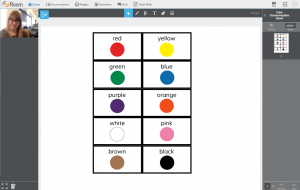
When working with students who are nonverbal, it’s important to first take inventory of their particular needs before developing an AAC system. Do they have a system already in place or are they testing any? How are they working? What types of environments and people does the student interact with because the system will have to be compatible? After answering these questions, you need to create a support team of additional therapists and teachers, family members and any home/after school caregivers. PresenceLearning therapists have an added bonus – they can lean on the experience and support of the approximately 700 therapists the company employs for activity and strategy suggestions.
With this understanding of what the student needs and who can help you, it is time to take inventory of the therapy site, which is most often the student’s school. Ask the school site about existing district procedures for assistive technology (AT) or if they have an AT team you should consult with during the planning and implementation process. You’ll need to know what type of equipment and technology they have, if students can take it home, and who is in charge of purchasing new technology if needed. You should also ask if the student completed an AT evaluation and, if not, how you can request one. Also, the district may have guidelines for developing an AAC Action Plan, so make sure to adhere to any criteria it has defined.
Planning for and conducting sessions via telepractice has its own set of considerations. First, make sure you and your entire team have access to any password or lock features on the student’s device, including iTunes or Google Play. Jen and Delaney also suggested using Google Sheets to create and share communication boards before sessions. You then need to communicate any materials you’ll need available in the room for the session so that the paraprofessional can bring them. And should a device’s battery die before a therapy session begins or during a session, ask the on-site paraprofessional to keep a paper copy of the session’s communication board on hand just in case.
Managing such a large support team from afar requires special care as well. Make sure everyone has the tools they need and knows how to implement them throughout the student’s day. It’s important to clearly define roles and delegate tasks, and do not assume a team member knows how to do something. Check in with your team to confirm they are comfortable performing their roles and tasks, and if they feel they need training, train them. Creating a Google Sheet not just for the communication board, but also for pending tasks with a “complete by” date helps keep a large team on task. Jen and Delaney both stressed the importance of scheduling short, periodic calls with the team to review student progress and team dynamic to make sure everyone is working together as they should.
Finally, just like any on-site therapist should do, learn what motivates the student and incorporate that into your sessions. Jen provided an example of how one of her students loved music and eventually learned how to communicate what type of music he wanted because he was so motivated. If they are motivated by food or stickers, make sure the paraprofessional has them at each therapy session.




